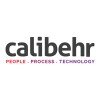
i
EXL
Service
Filter interviews by
EXL Service Accountant Interview Questions and Answers
8 Interview questions
The type of account refers to the classification of accounts based on their nature and purpose.
There are five main types of accounts: assets, liabilities, equity, revenue, and expenses.
Assets are resources owned by the company, such as cash, inventory, and equipment.
Liabilities are obligations owed by the company, such as loans and accounts payable.
Equity represents the owner's stake in the business.
Revenue is the...
Current assets are assets that are expected to be converted into cash or used up within one year.
Includes cash, accounts receivable, inventory, and prepaid expenses
Listed on the balance sheet under assets
Helps determine a company's liquidity and ability to pay off short-term obligations
Bank reconciliation is the process of comparing and matching the balances in a company's accounting records with the balances on its bank statement.
Bank reconciliation helps ensure that all transactions are recorded accurately in the company's books.
It involves comparing the company's records of its bank account with the bank statement to identify any discrepancies.
Common reasons for discrepancies include outstand...
Journal entries for accounts receivable record the increase and decrease in the amount owed by customers.
When a sale is made on credit, the journal entry debits accounts receivable and credits sales revenue.
When a customer makes a payment, the journal entry debits cash and credits accounts receivable.
If a customer returns goods, the journal entry debits sales returns and allowances and credits accounts receivable.
...
What people are saying about EXL Service





The journal entry for accounts payable is a credit to accounts payable and a debit to the corresponding expense or asset account.
Accounts payable is a liability account that represents the amount owed to suppliers or vendors for goods or services received.
When recording the journal entry for accounts payable, the accounts payable account is credited to increase the liability.
The corresponding expense or asset acco...
Tangible assets are physical assets that can be seen and touched.
Real estate
Machinery
Vehicles
Inventory
Furniture and fixtures
Working capital is the measure of a company's liquidity and operational efficiency. It represents the difference between current assets and current liabilities.
Working capital is the amount of money available to a company for its day-to-day operations.
It is calculated by subtracting current liabilities from current assets.
Positive working capital indicates that a company has enough assets to cover its short-term l...
The gold rule of accounting states that debits must equal credits in every financial transaction.
Debits must always equal credits in accounting entries
It is the foundation of double-entry accounting
Helps ensure accuracy and balance in financial records
EXL Service Accountant Interview Experiences
4 interviews found
(5 Questions)
- Q1. What type account
- Ans.
The type of account refers to the classification of accounts based on their nature and purpose.
There are five main types of accounts: assets, liabilities, equity, revenue, and expenses.
Assets are resources owned by the company, such as cash, inventory, and equipment.
Liabilities are obligations owed by the company, such as loans and accounts payable.
Equity represents the owner's stake in the business.
Revenue is the inco...
- Q2. What is bank reconciliation
- Ans.
Bank reconciliation is the process of comparing and matching the balances in a company's accounting records with the balances on its bank statement.
Bank reconciliation helps ensure that all transactions are recorded accurately in the company's books.
It involves comparing the company's records of its bank account with the bank statement to identify any discrepancies.
Common reasons for discrepancies include outstanding c...
- Q3. Any five tangible Assets
- Ans.
Tangible assets are physical assets that can be seen and touched.
Real estate
Machinery
Vehicles
Inventory
Furniture and fixtures
- Q4. What is current Assets
- Ans.
Current assets are assets that are expected to be converted into cash or used up within one year.
Includes cash, accounts receivable, inventory, and prepaid expenses
Listed on the balance sheet under assets
Helps determine a company's liquidity and ability to pay off short-term obligations
- Q5. Gold rule of Accounting
- Ans.
The gold rule of accounting states that debits must equal credits in every financial transaction.
Debits must always equal credits in accounting entries
It is the foundation of double-entry accounting
Helps ensure accuracy and balance in financial records
Interview Preparation Tips
I applied via Walk-in and was interviewed in Dec 2023. There were 2 interview rounds.
(1 Question)
- Q1. Just asked your resume
(1 Question)
- Q1. Bank statement , TDs , gst r1 and 3b
Interview Preparation Tips

(2 Questions)
- Q1. What is the journal entry for accounts payable
- Ans.
The journal entry for accounts payable is a credit to accounts payable and a debit to the corresponding expense or asset account.
Accounts payable is a liability account that represents the amount owed to suppliers or vendors for goods or services received.
When recording the journal entry for accounts payable, the accounts payable account is credited to increase the liability.
The corresponding expense or asset account i...
- Q2. What is the journal entries for acvounts recievable
- Ans.
Journal entries for accounts receivable record the increase and decrease in the amount owed by customers.
When a sale is made on credit, the journal entry debits accounts receivable and credits sales revenue.
When a customer makes a payment, the journal entry debits cash and credits accounts receivable.
If a customer returns goods, the journal entry debits sales returns and allowances and credits accounts receivable.
If an...
I applied via Recruitment Consultant and was interviewed in Dec 2021. There were 3 interview rounds.
Interview Questionnaire
1 Question
- Q1. What is working capital. Why working capital negative
- Ans.
Working capital is the measure of a company's liquidity and operational efficiency. It represents the difference between current assets and current liabilities.
Working capital is the amount of money available to a company for its day-to-day operations.
It is calculated by subtracting current liabilities from current assets.
Positive working capital indicates that a company has enough assets to cover its short-term liabil...
Interview Preparation Tips
Interview questions from similar companies

I applied via Referral and was interviewed before Oct 2019. There were 3 interview rounds.
Interview Questionnaire
4 Questions
- Q1. What is Accountancy
- Ans.
Accountancy is the practice of recording, analyzing, and reporting financial transactions for individuals, businesses, and organizations.
Accountancy involves the systematic recording of financial transactions.
It includes analyzing financial data to provide insights and make informed decisions.
Accountants prepare financial statements and reports to communicate the financial health of an entity.
They ensure compliance wit...
- Q2. What is the debtor
- Ans.
A debtor is a person or entity that owes money or has a financial obligation to another party.
A debtor is someone who has borrowed money or received goods or services on credit.
Debtors can be individuals, businesses, or even governments.
They are legally obligated to repay the borrowed amount or fulfill their financial obligations.
Debtors are recorded as liabilities on the balance sheet of the creditor.
Examples of debto...
- Q3. What is creditor
- Ans.
A creditor is a person or entity to whom money is owed.
A creditor is someone who has provided goods or services on credit.
They are owed money by the debtor.
Creditors can be individuals, businesses, or financial institutions.
Examples of creditors include suppliers, banks, and bondholders.
- Q4. What is the ledger entry of credit sale
- Ans.
The ledger entry for a credit sale involves recording the increase in accounts receivable and the corresponding increase in sales revenue.
Credit sale is a transaction where goods or services are sold on credit, meaning the payment is expected at a later date.
To record a credit sale, the accounts receivable account is debited to increase the amount owed by the customer.
Simultaneously, the sales revenue account is credit...
Interview Preparation Tips

I appeared for an interview before Jun 2021.
(2 Questions)
- Q1. Normal tell me about yourself
- Q2. One topic need yo talk about 2-3 mins
Interview Preparation Tips

I applied via Company Website and was interviewed in Sep 2021. There was 1 interview round.
Interview Questionnaire
1 Question
- Q1. About your self
Interview Preparation Tips

I applied via Company Website
(1 Question)
- Q1. Tell me something about yourself Why do you want to work here What is your greatest strength What do you know about this company
- Ans.
Detail-oriented accountant with a passion for financial accuracy and a strong desire to contribute to your company's success.
I have a degree in Accounting and over 5 years of experience in financial reporting and analysis.
My greatest strength is my attention to detail; for example, I identified discrepancies in financial statements that saved my previous employer thousands.
I admire your company's commitment to sustaina...
Interview Preparation Tips

I appeared for an interview before Apr 2024, where I was asked the following questions.
- Q1. Self introduction
- Q2. Subjects and about us company

I applied via LinkedIn and was interviewed before May 2023. There was 1 interview round.
(1 Question)
- Q1. Tell about your past experience
- Ans.
I have over five years of accounting experience, specializing in financial reporting and tax compliance for various industries.
Managed financial statements for a mid-sized manufacturing company, ensuring accuracy and compliance with GAAP.
Led a team in preparing tax returns, resulting in a 15% reduction in tax liabilities through strategic planning.
Implemented a new accounting software system that improved reporting eff...
Interview Preparation Tips
EXL Service Interview FAQs
Tell us how to improve this page.
EXL Service Interviews By Designations
- EXL Service Business Analyst Interview Questions
- EXL Service Consultant Interview Questions
- EXL Service Executive Interview Questions
- EXL Service Assistant Manager Interview Questions
- EXL Service Senior Associate Interview Questions
- EXL Service Senior Executive Interview Questions
- EXL Service Data Analyst Interview Questions
- EXL Service Associate Interview Questions
- Show more
Interview Questions for Popular Designations
Overall Interview Experience Rating
based on 5 interview experiences
Difficulty level
Duration
Accountant Interview Questions from Similar Companies
EXL Service Accountant Reviews and Ratings
based on 9 reviews
Rating in categories
|
Senior Executive
4.5k
salaries
| ₹2.5 L/yr - ₹7.5 L/yr |
|
Assistant Manager
3.6k
salaries
| ₹6 L/yr - ₹12.6 L/yr |
|
Senior Associate
2.6k
salaries
| ₹2.3 L/yr - ₹6.6 L/yr |
|
Lead Assistant Manager
2k
salaries
| ₹10.6 L/yr - ₹18.1 L/yr |
|
Executive
1.9k
salaries
| ₹1.7 L/yr - ₹5 L/yr |

Genpact

DXC Technology

Mphasis

Sutherland Global Services
- Home >
- Interviews >
- EXL Service Interview Questions












